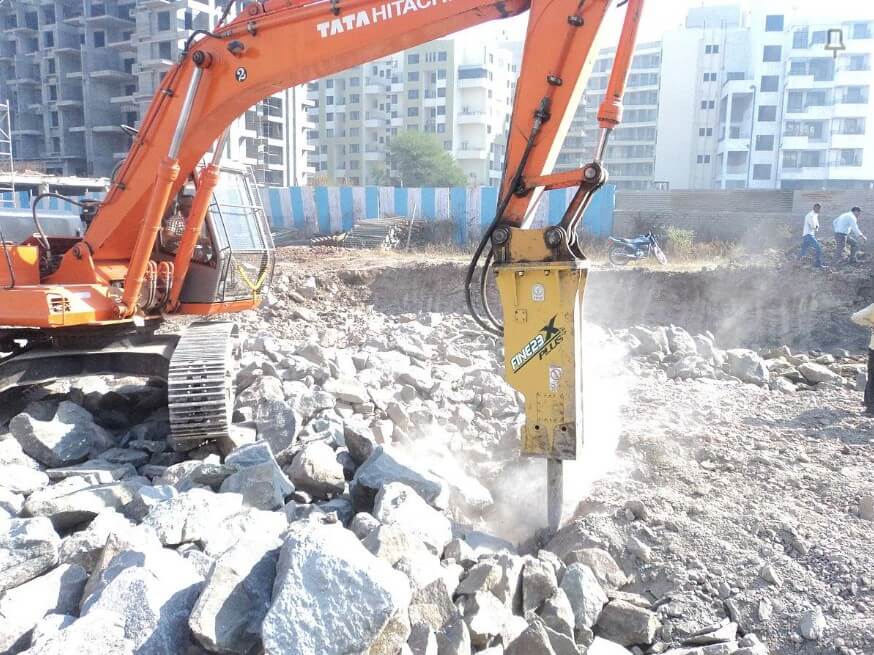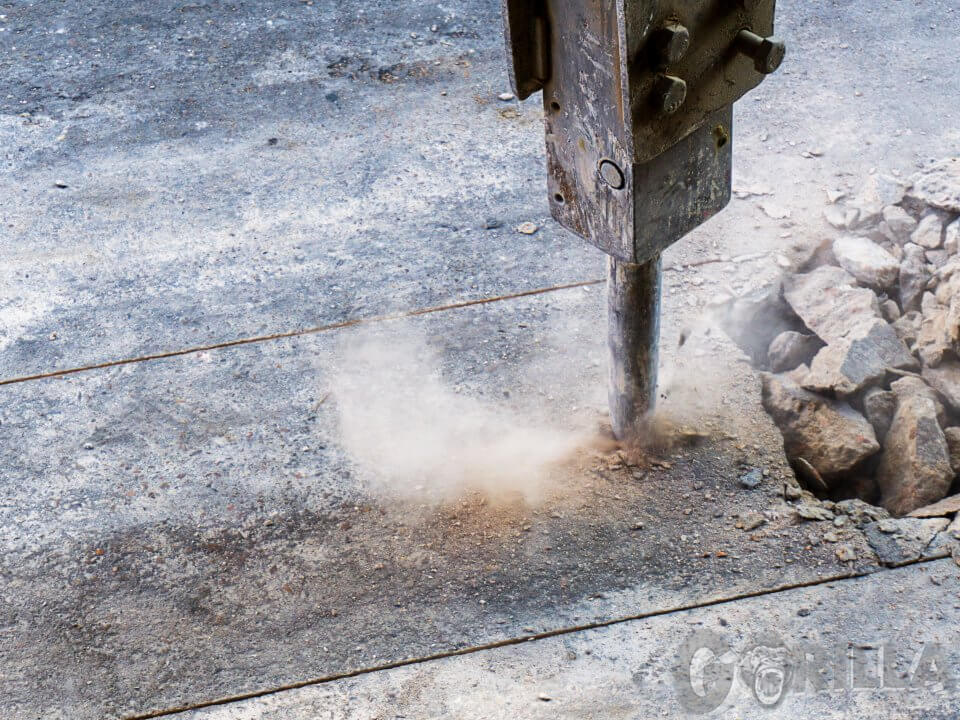
Hydraulic Hammer Winter Checklist
December 17, 2019
Hydraulic Breaker Attachments: The Do’s and Don’ts
January 21, 2021A hydraulic hammer or breaker is an investment, and with the proper maintenance and care, it can last about 8-10 years. However, this ultimately depends on how well it is cared for during and between uses. When you don’t do some of the crucial steps for proper operation, you may actually be decreasing the lifespan of your hammer. We’ve put together 3 simple tips that anyone can follow to help extend the lifespan of your hydraulic hammer and ensure it’s functioning properly and safely.
Proper Setup on the skid steer, mini or excavator
The first and most crucial step in using your hydraulic hammer is making sure that each skid steer, mini or excavator it is used on is flow tested prior to operation to ensure that it is supplying oil to the carrier within its specifications. If it is above the specifications, it will shorten the life of the hydraulic breaker, below and it will not make power or be lubricated properly.
Correct Operation
A hydraulic hammer should never be cycled for longer than 20 seconds in the same spot on the material. It overheats the breaker and can melt the demolition tool. Further, never fire your breaker unless it is firmly planted on the material you are breaking. This “blank firing” severely stresses the tool retainers and main fasteners, causing broken tie rods and often leading to internal damage. When you rent or buy hammers from Gorilla Hammers, we’ll ensure that you’re getting a piece of equipment that is suitable for the projects it’s needed for. You’ll also want to make sure when setting it up that the hydraulic systems are set to match the hammer. If the flow is set to work faster than necessary, this can cause damage to the hammer.
Regular Lubrication with Chisel Paste or Hydraulic Hammer Lubricant
Chisel paste or hydraulic breaker grease is totally different than the chassis grease used on the cylinders and bearing surfaces. Hydraulic hammer lubricant with a high metal content and melting point is designed to stand up to the high heat, metal to metal contact generated during rockbreaking. 10-20 “pumps” of grease with the hammer standing vertical every two hours of operation is great protection against worn bushings. One of our experts will be able to guide you in the right direction for this. It’s important to also ensure that you’re using the correct amount, as it’ll differ from hammer to hammer. Grease keeps the tool bushing area filled in order to prevent overheating and reduce friction. This is critical for extending the lifespan of your hydraulic hammer and keeping it running smoothly for years to come.
Store Your Hydraulic Breaker Correctly
The worst thing you can do is store a hydraulic hammer horizontal. Laying it down when hot will misshape the seals, and leaving it horizontal for long periods will result in water intrusion that will result in rust damage to the piston and cylinder of the breaker. Always rest or store a hydraulic hammer in a vertical position.
Schedule Regular Inspections and Maintenance
Just as a vehicle needs yearly inspections, your hammer is a complex piece of equipment that should also be inspected regularly. Nitrogen exists in all hydraulic breakers and should be checked regularly. The hydraulic hammer should be checked for missing, broken or loose fasteners and lower bushing wear every forty hours of operation. A broken tie rod or side bolt can cause thousands iin internal damage if it is not caught early. A worn out lower bushing can cause piston to cylinder scuffing and other internal damage. Scheduling regular maintenance services will help to catch any issues before they become detrimental to the lifespan of your hydraulic breaker. At Gorilla Hammers, we provide a range of repair services and can have your hammer running properly again in no time if we do find any issues. Regular inspections can save you time and money in the long run, while extending the lifespan of your investment.
Contact Gorilla Hammers
These are just a few tips to keep your hydraulic hammer running efficiently for longer. Get in contact with the experts at Gorilla Hammers to learn more about proper maintenance of your breaker, or to schedule a service. Fill out an online form or give us a call today!




